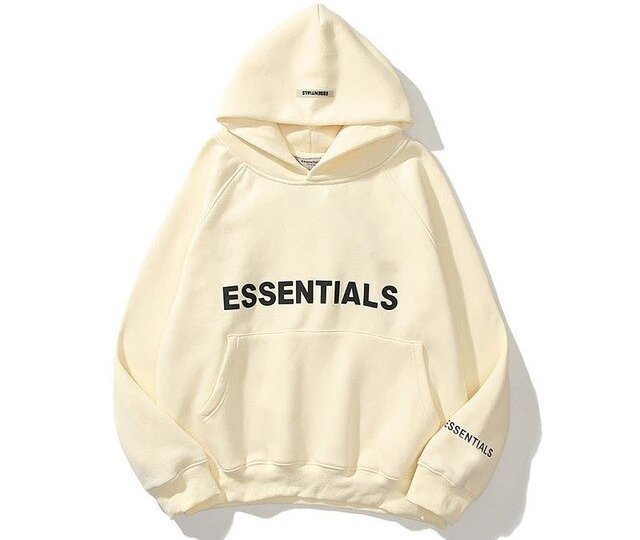
Essential Clothing for Seasonal Transitions
As the seasons shift, so does the weather—often unpredictably. Mornings may start chilly, afternoons can bring warmth, and evenings return to a brisk coolness. Navigating this fluctuation in temperature can be tricky without the right wardrobe. That’s why having transitional Essential Clothing clothing essentials is key to staying comfortable, stylish, and prepared. Whether you’re shifting from winter to spring or summer to fall, certain versatile pieces make all the difference.
1. Layering: The Golden Rule of Transitional Dressing
The foundation of any seasonal wardrobe is layering. Instead of opting for a single bulky piece, layering allows you to adjust your outfit as the day evolves. Start with lightweight basics and add removable layers to adapt to the changing temperatures.
Base Layers
Invest in quality cotton or moisture-wicking tops. These act as a breathable base to regulate body temperature. Long-sleeve tees, tank tops, and fitted turtlenecks are perfect choices.
Mid-Layers
These include cardigans, button-up shirts, and light sweaters. They offer warmth without bulk and are easy to remove if the day heats up.
Outer Layers
For those unexpected weather swings, a light jacket or windbreaker is essential. Look for options that are water-resistant and compact, like a packable down jacket or a light trench coat.
2. The Versatile Jacket Collection
During transitional periods, having the right jacket can make or break your outfit’s function and style. Rather than relying on heavy coats or thin cardigans alone, consider these in-betweeners:
-
Denim Jacket: A timeless staple that pairs well with dresses, trousers, or joggers.
-
Utility Jacket: With pockets and a durable structure, it’s great for a casual, outdoorsy look.
-
Bomber or Lightweight Puffer: Adds warmth and a touch of edge.
-
Trench Coat: Polished enough for work and practical for rain, the trench coat offers a refined solution for unpredictable weather.
Neutral tones like olive, camel, and navy are ideal as they match most outfits.
3. Pants That Bridge the Gap
Seasonal transition means finding pants that aren’t too heavy for spring or too light for fall. A few smart options include:
-
Chinos: Lightweight, breathable, and available in multiple colors, chinos are a step up from jeans and more comfortable during warmer afternoons.
-
Straight-Leg Jeans: A classic option that works in both cool and mild conditions. Consider mid-wash denim for versatility.
-
Cropped Trousers: Show off your boots or sneakers while offering a breezier alternative to full-length pants.
-
Leggings or Ponte Pants: Ideal for casual wear or layering under tunics and long tops.
4. Footwear That Adjusts to the Season
Footwear during transitional seasons needs to be adaptable and weather-appropriate. Here’s what to keep on hand:
-
Ankle Boots: Stylish and functional, ankle boots are perfect for wet sidewalks or cooler mornings.
-
Sneakers: Lightweight, breathable, and suitable for daily wear, sneakers are great for both fashion and function.
-
Loafers or Mules: These offer an easy on-off option and a polished finish, especially when it’s not quite boot weather.
-
Water-Resistant Options: Weatherproof shoes or boots can be lifesavers during unexpected showers.
Stick with neutral shades like tan, black, and white to get the most wear across outfits.
5. Transition-Friendly Tops
During seasonal changes, you’ll want tops that can function solo on warmer days or as part of a layered outfit on chillier ones.
-
Button-Down Shirts: Perfect for layering over a tee or under a sweater.
-
Lightweight Knit Sweaters: Breathable but warm enough for cool mornings.
-
Blouses in Natural Fabrics: Linen and cotton blends offer comfort and breathability.
-
Oversized Tops: These pair well with slim-fitting pants and offer a relaxed style that adapts to temperature swings.
6. Dresses and Skirts: Year-Round Potential
Don’t pack away your dresses and skirts too soon. With the right layering, they can extend into the next season seamlessly.
-
Midi and Maxi Dresses: Pair with a denim jacket or long cardigan for added warmth.
-
Sweater Dresses: Cozy but breathable—perfect for cooler days.
-
Tights and Leggings: Use them under skirts or dresses to transition summer favorites into fall outfits.
-
Wrap Dresses: Easily layered and adjustable for fluctuating temperatures.
7. Accessories That Add Warmth and Style
Accessories are your secret weapon during seasonal transitions. They can instantly adapt your outfit without requiring a full change.
-
Scarves: Lightweight or chunky depending on the need—ideal for adding warmth around the neck or shoulders.
-
Hats: A wool fedora or beanie can add style while keeping you cozy.
-
Gloves and Socks: Light gloves and cozy socks are great to have on hand for cooler starts and ends to the day.
-
Belts: Help define your silhouette when layering bulkier clothing.
8. Color and Fabric Considerations
In transitional seasons, color and fabric matter more than ever.
-
Stick to Neutrals: Gray, navy, camel, olive, and black are flexible and mix well across different pieces.
-
Incorporate a Pop of Color: Burnt orange, mustard, or dusty rose can bring seasonal freshness to neutral bases.
-
Opt for Breathable but Insulating Fabrics: Think wool blends, cotton, Tencel, and merino wool.
Conclusion: Be Prepared, Not Overwhelmed
Transitional dressing doesn’t mean buying a Essentials Hoodies whole new wardrobe—it means strategically using pieces that adapt. The key is versatility, layering, and attention to temperature changes throughout the day. With the right essentials—light jackets, layering tops, mid-weight pants, and versatile accessories—you can build outfits that keep you comfortable and stylish, no matter what the season throws at you.
Invest in pieces you can mix, match, and wear often, and you’ll transition through the seasons effortlessly.




